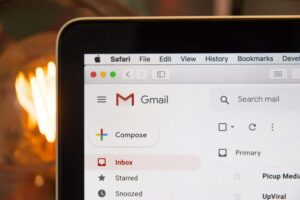With over 500 million members in 200 countries, and with 2 new users joining every second, LinkedIn has stored a virtual treasure trove of interesting data.
Unfortunately, the most sought-after candidates and contacts are the ones who tend to delete and filter more emails than anyone else. So it’s not just about metrics and conversion rates, but also about the quality of the relationships established.
Set your filter.
It’s not really about the content of the message itself, more about the data, but you see, it affects your results. First, the closer your relationship with the other person, the more likely you are to build a relationship or at least get a referral. Next, listing your skills or qualities allows your contacts to find commonalities with you. For example, your hobbies or your professional interests. You can use these elements as a connection point.
You also have the added advantage that if you reduce the number of messages you send, you will have more time to make the content of each message personalized and engaging.
Introduce yourself.
That’s not only a common courtesy, but also a good way to start off on the right foot. Try to make it seem like you might have met before-everyone loves personalized messages. “I’m Ricard, we met at the 10th anniversary event” or “I’m Ricard, and I loved your latest blog on climate change.” Don’t skip this step on LinkedIn! You should never assume that your contact will simply click on your profile to meet you or see your connections.
Use LinkedIn’s “How You’re Connected” feature to see if you have any shared connections with a candidate. For short, you may even want to request a direct introduction to your shared connection.
Personalize.
In case you missed it, there are snippets in any automation software, so just by populating your database and using the right phrase you can create a sense that the message was tailored to the person you are talking to. There is research that claims you get a 26% increase in open rates just by mentioning the first name.
Get to the point quickly.
No one likes to waste their time on long introductions and resume lists. Explain why you’re trying to connect, since “just being connected” doesn’t help. This should be your second (and last!) paragraph.
Sometimes you can find various tips that help you postpone the sale and conversion for later, but they always include some kind of deception and hypocrisy in them, even if they seem appealing, you may end up generating rejection or detachment in your contact. Stick with clarity and honesty, this always works.
Do you want a complete check-list in Excel format? Contact us through the form or subscribe to our newsletter in the right corner above. We will send it to you without fail.
Consider attention span.
As frustrating as it may seem, on average, your message will have about 15-20 seconds to scan and if it doesn’t grab attention within that time, forget it. How much does that cost in words? Again, on average, about 45-55. Some studies even say it’s 8 seconds you can really count on, so as you can see, the shorter the better.
Ask questions.
Not the rhetorical or very specific kind, but the kind of questions that will encourage the recipient to interact. “What did you think of my last blog post?” is not the best question, whereas “Have you ever tried to research business strategies on the web? What tool did you use?” – THAT is a question that requires an answer.
Don’t make it all about you.
Let your interlocutors talk about themselves, everyone loves that and once they do you show interest, that’s how you’ll win them over.
Be human.
That said, try to avoid complicated sentences, too many bullet points or slogans that no one would use in a message to a friend.
Add an image.
Don’t send nudity, controversial topics (like religion or politics) or banned jokes with sensitive subject matter, but a simple GIF about Disney movies or a cat meme. As long as it’s related to the topic, of course.
Make the next step clear.
The last two lines of the message are the closing moment try to act gracefully but frankly: there’s no need to bend over backwards, but when you ask someone for a favor, you don’t know if you’re going to call or email them in the end. This is why being clear in your closing is crucial.
If you don’t need a response and the message is just for your information, tell them.
Although it’s not common that when sending a cold message you don’t expect a response, sometimes you generate excessive interactions (like when you inform your contacts about a long period out of the office or something similar). But if you do, try to leave a cliffhanger, something that arouses the reader’s curiosity and make readers wait for your next contact. Like, “I’m working on this revolutionary new project and will share the details when I return.”
Set a time limit.
If there is a deadline, say so. In case the request is not urgent, say that too. People value their time and have to prioritize. If you want to arrange a call, give your schedule and ask the reader to select a time that best fits his or her schedule.
Don’t repeat yourself.
There is no need to say your name again after “Thank you and goodbye”, people are able to scroll up the message or simply look at the conversation window. Avoid redundancy whenever possible, whether it’s the introduction, in the call to action or any other part of your message.
Ask non-work related questions.
While it may not be customary to ask personal questions, when you run a cold mass mailing campaign, especially with automated tools, it will definitely make a difference if your follow-up messages are sent manually. Try to introduce a causal mention or question that catches the recipient’s attention.
Where do they live? Where did they go to college? Do they have any interests or hobbies? Do they volunteer? Is there something on their mind? Anything you can find will help you start a conversation that isn’t explicitly trying to sell your product or service. What you’re trying to do is create a bond and get people to remember you.
Keep the follow-up in line with everything else.
The faster you respond, the shorter your response will be, and in general, don’t write 5,000-word responses, as no one is willing to read that much.

Don’t get intense.
Yes, sometimes you will have to send more than one message, we know the rules. But instead of asking if the person had a chance to consider that your offer adds any value or new information.
Respect boundaries.
It’s not acceptable to follow up on an email within 48 hours unless it’s really urgent. And even then, you’re better off contacting them by phone.
Try to quickly move the conversation from LinkedIn to email.
People spend a lot more time in their inbox than they do on this network, so you’ll have a better chance of getting responses. And also sharing your contact information frequently is considered a sign of interest. Try to come up with a credible but brief explanation as to why you are requesting a person’s email address. However, you don’t need to be overly insistent.





